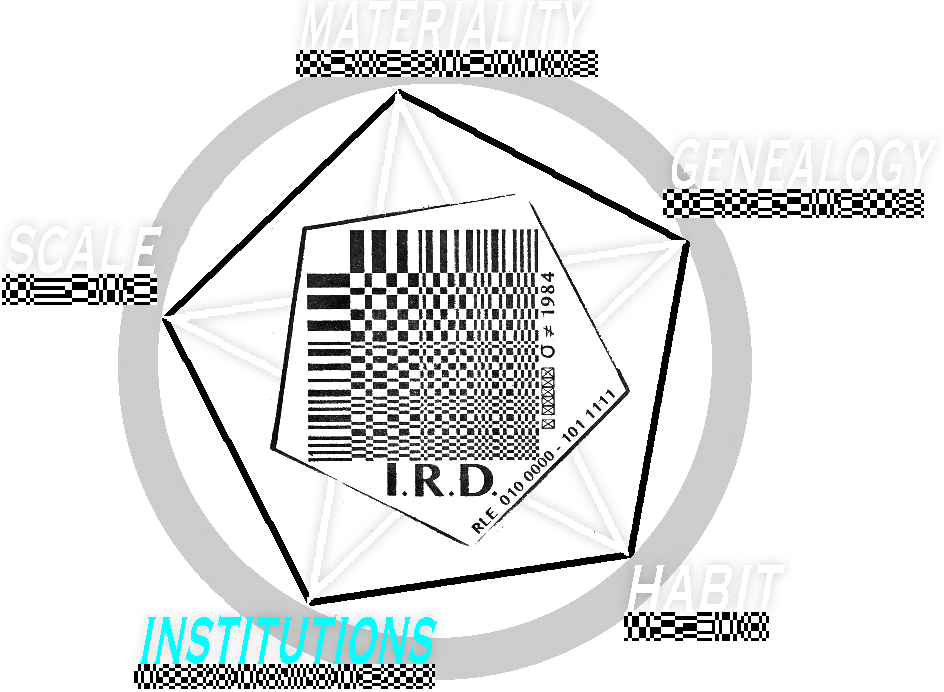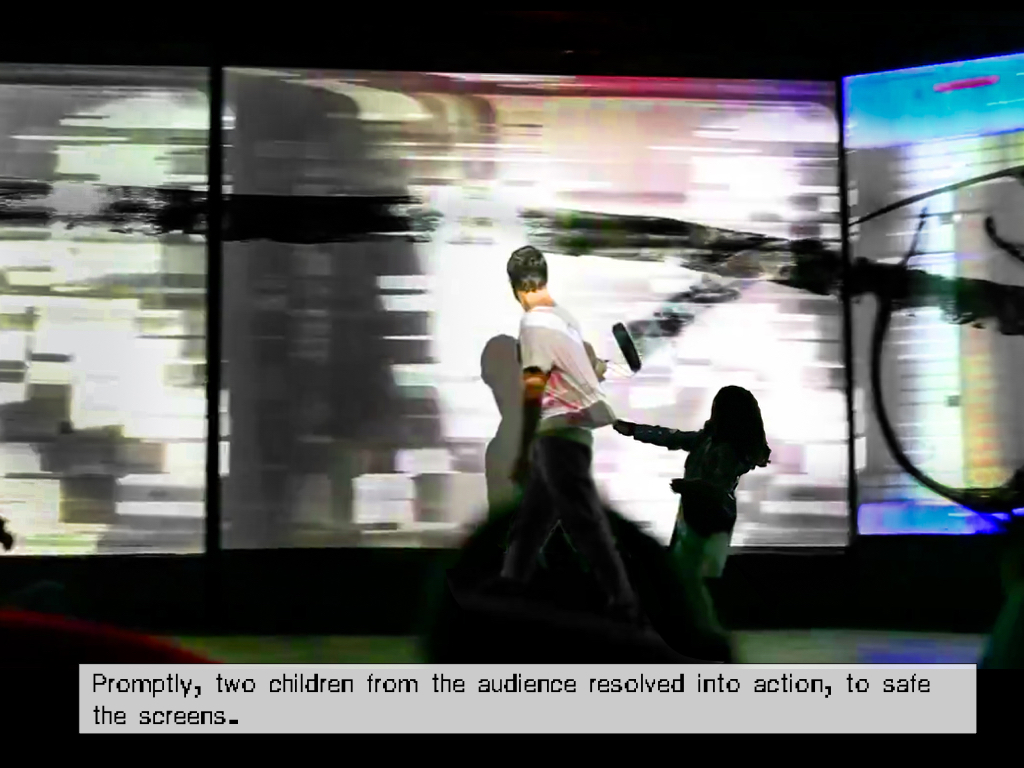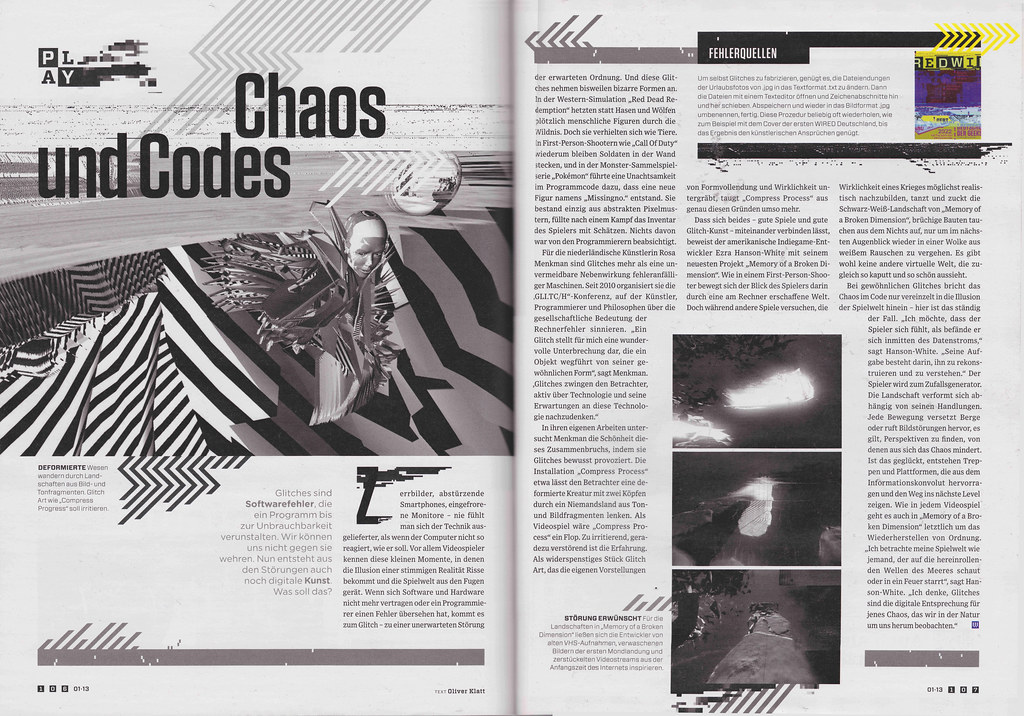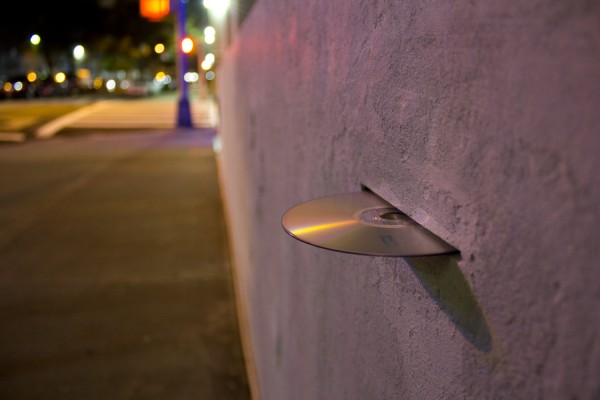[ 0011 ]
Resolution Dispute 0011: Institutions and Tactics.
[[part of Resolution Studies]]
In the 1970s Joseph Goguen and Rod Burstall wrote that ‘institution’ refers to a slightly more compound framework, that deals with the growing complexities, connecting different logical systems (such as databases and programming languages) within computer sciences. A main result of these non-logical institutions is that different logical systems can be glued together at a substrata level, forming illogical frameworks through which computation also takes place.▁∣∖▁╱▔▔╲________
The slides underneath are from the New Media class ‘Beyond Resolution’ taking as its central theme: Screenology and Tactical Media
,

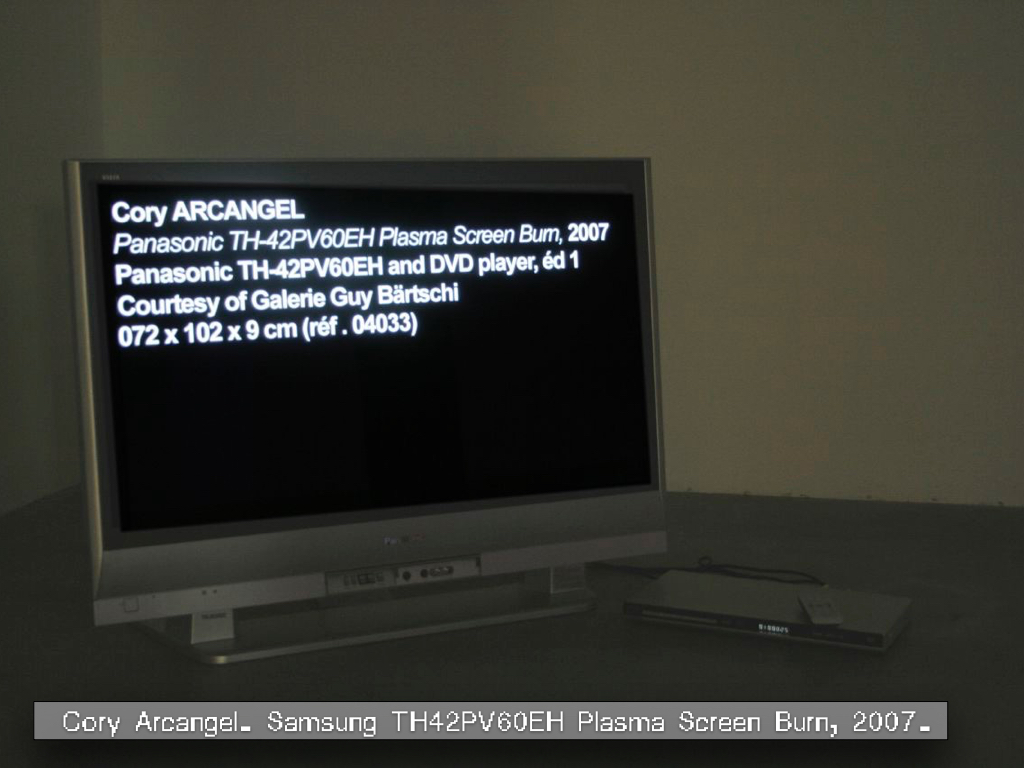
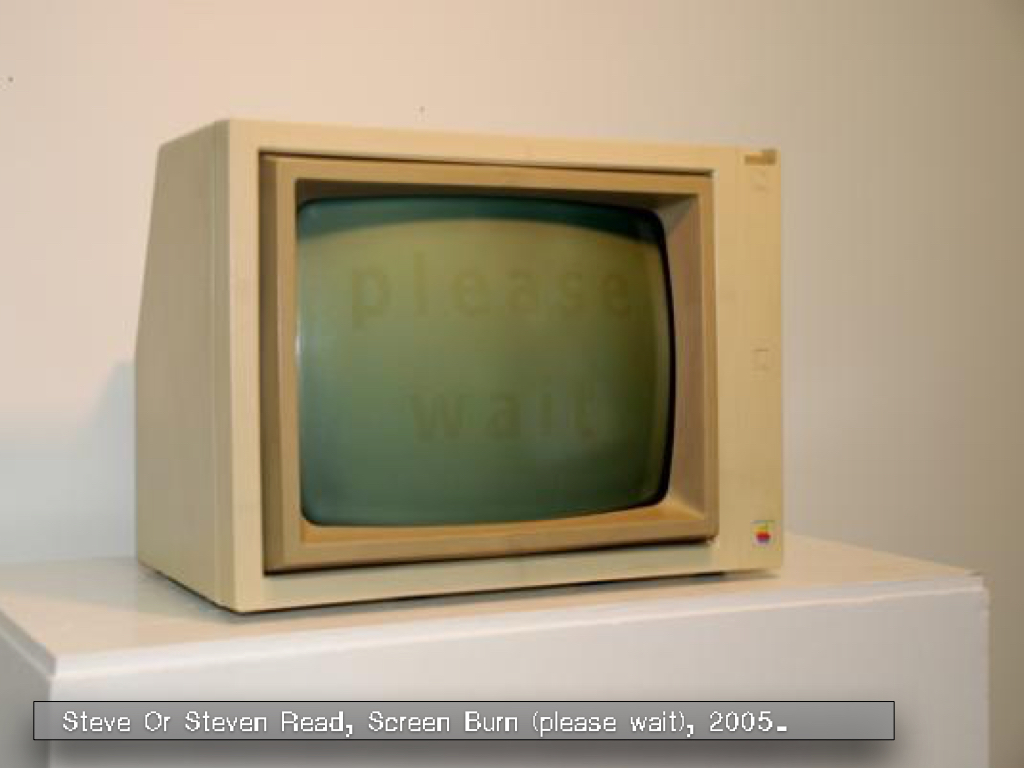
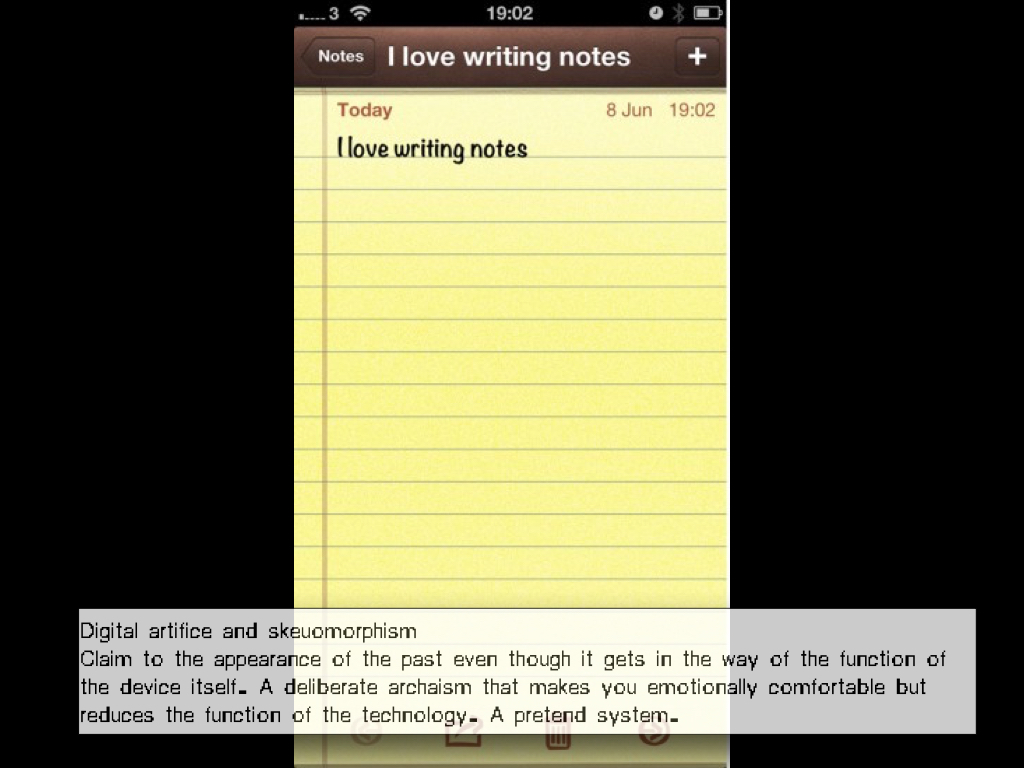
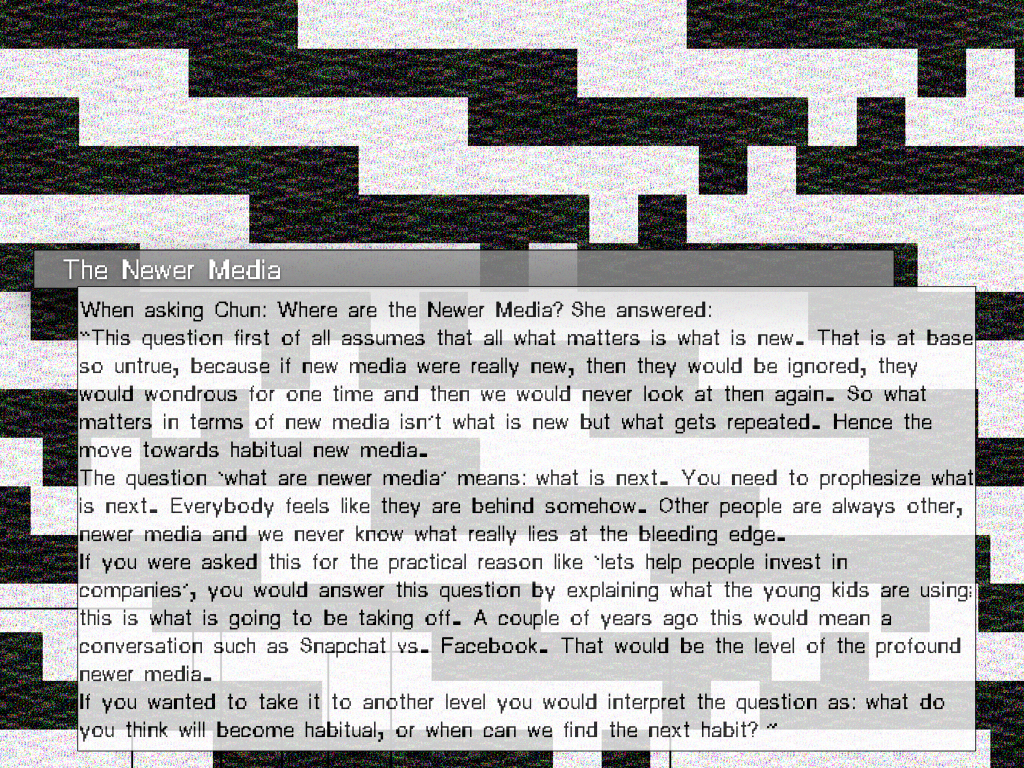

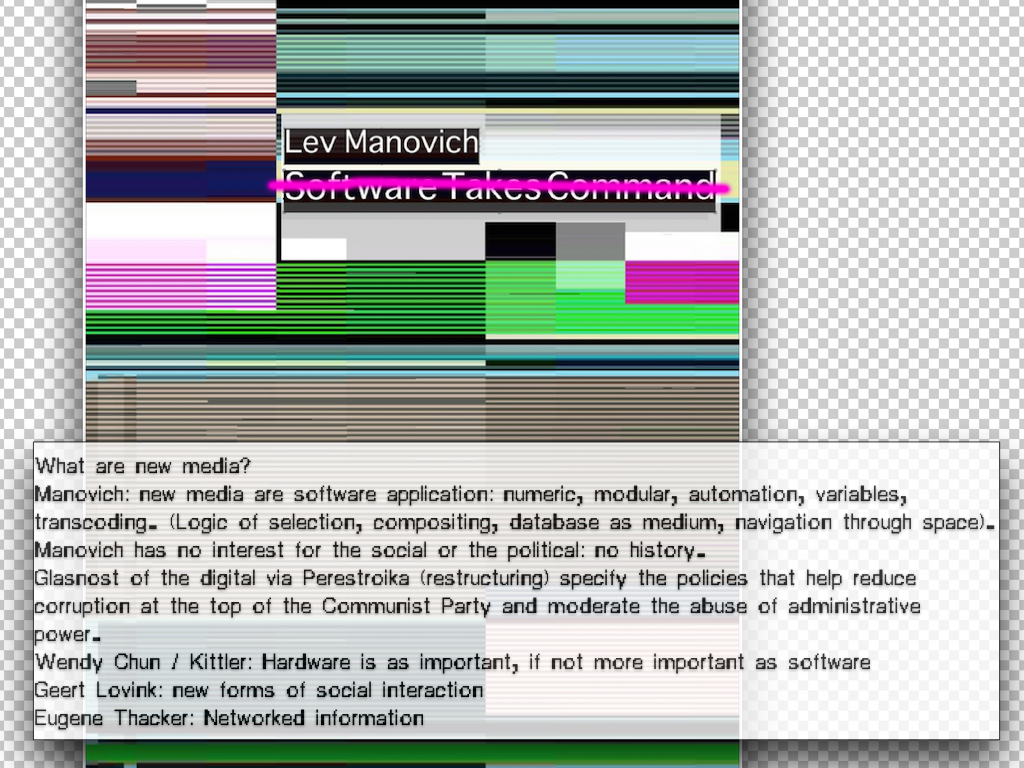
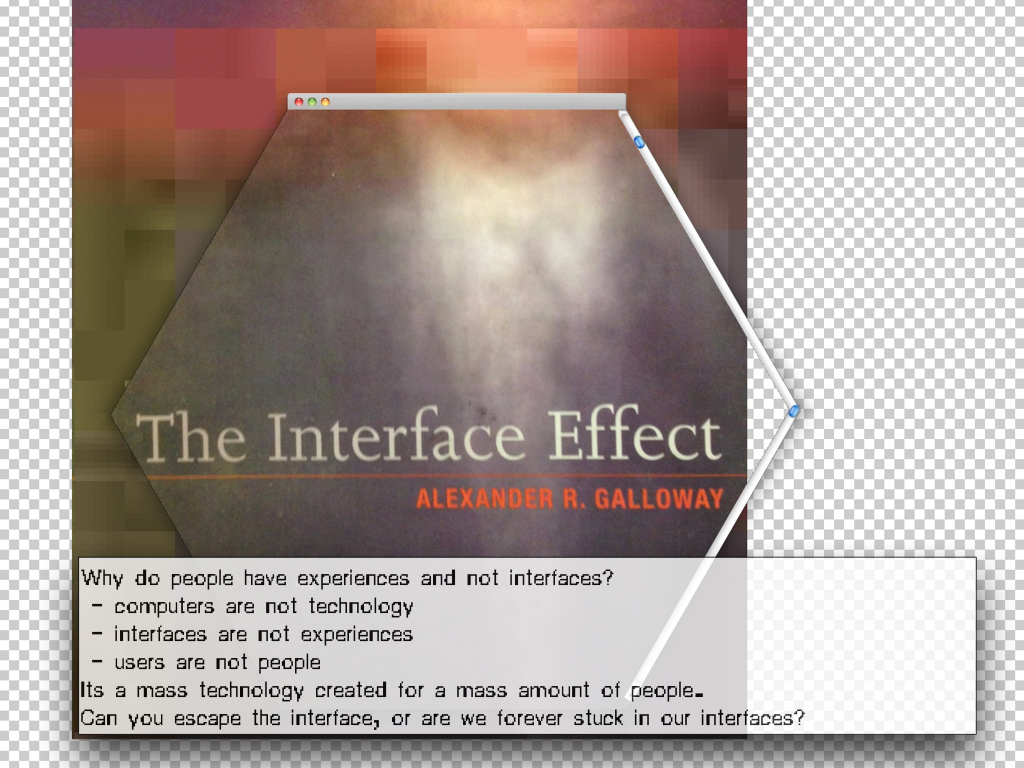
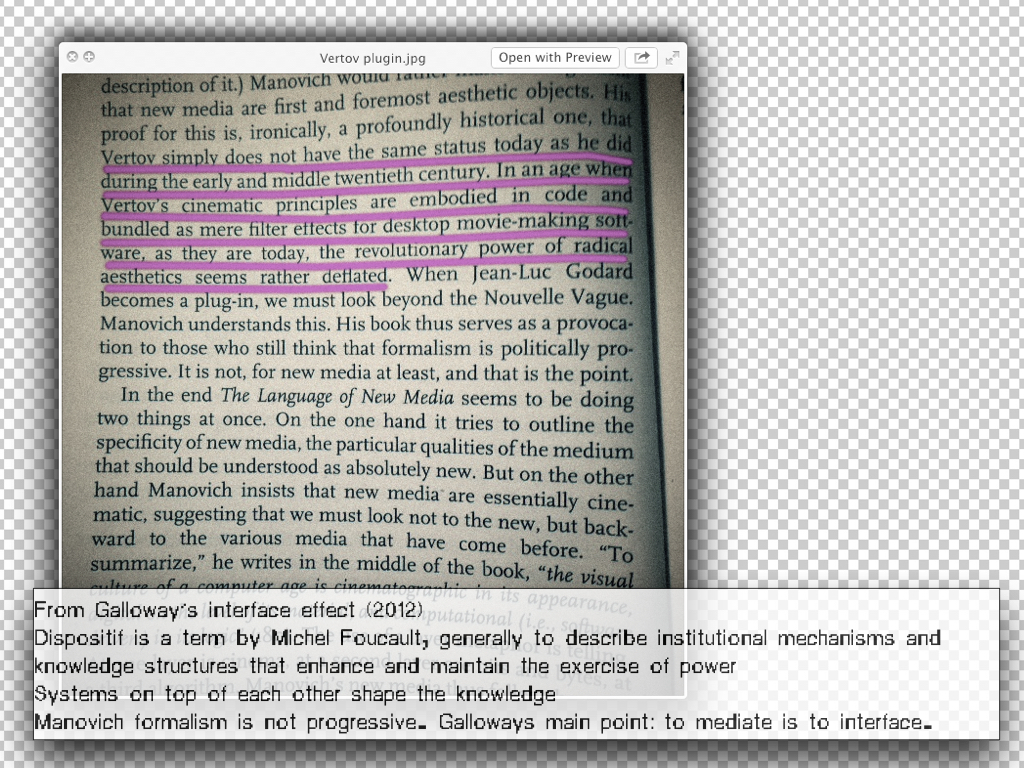

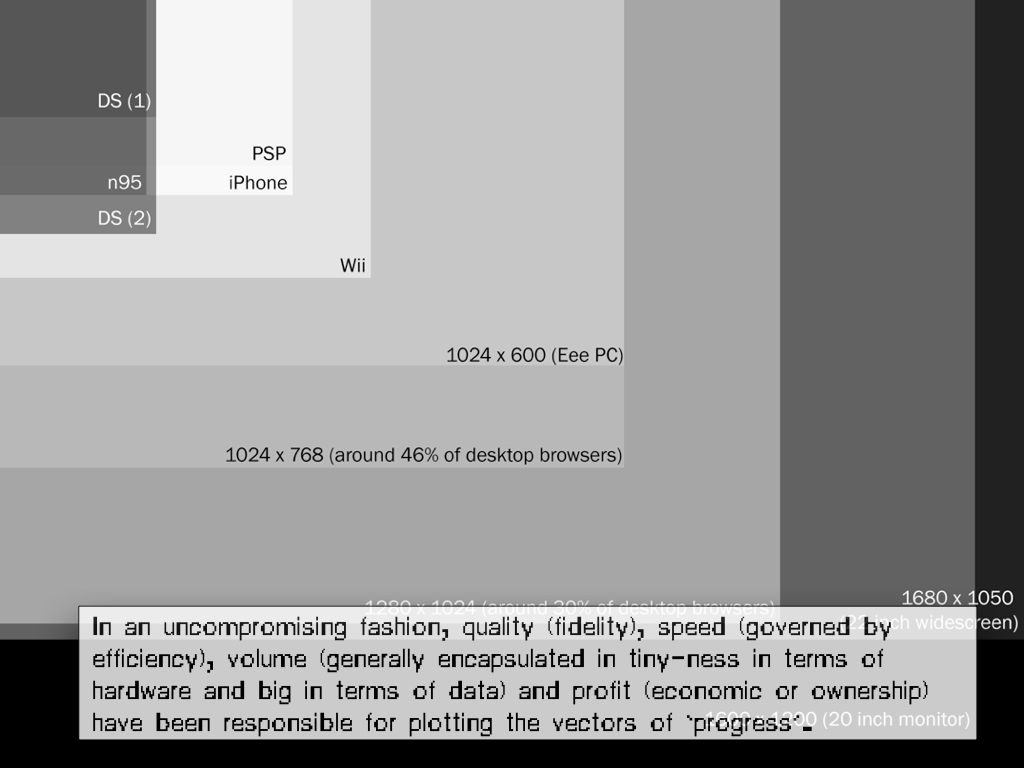
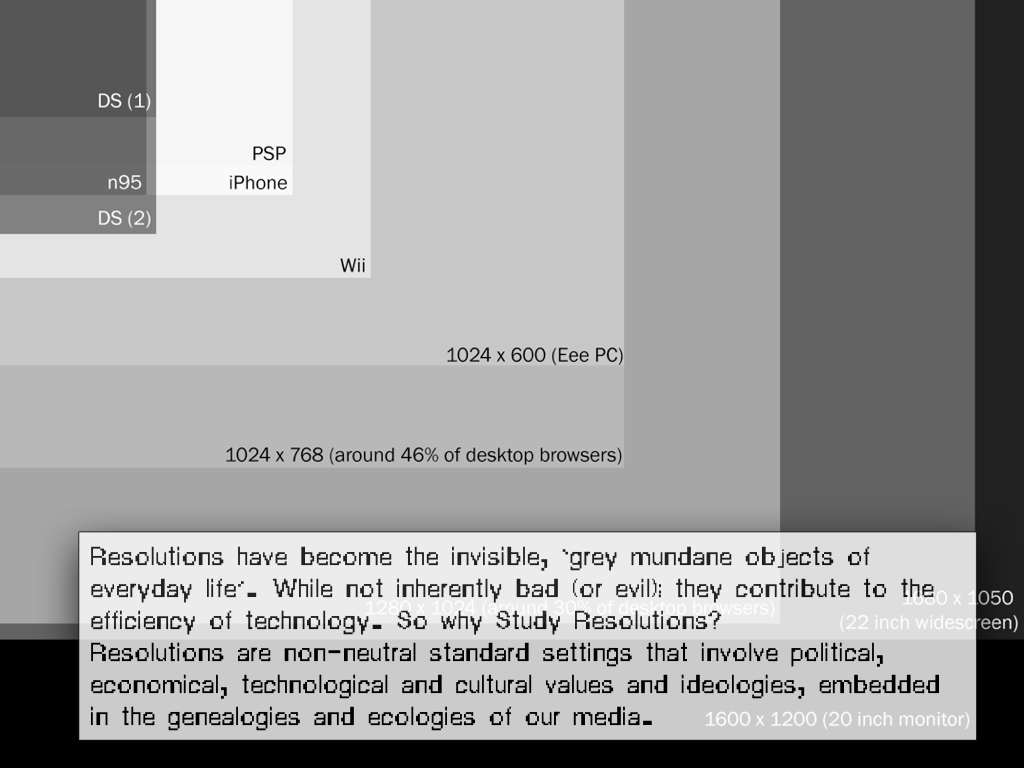
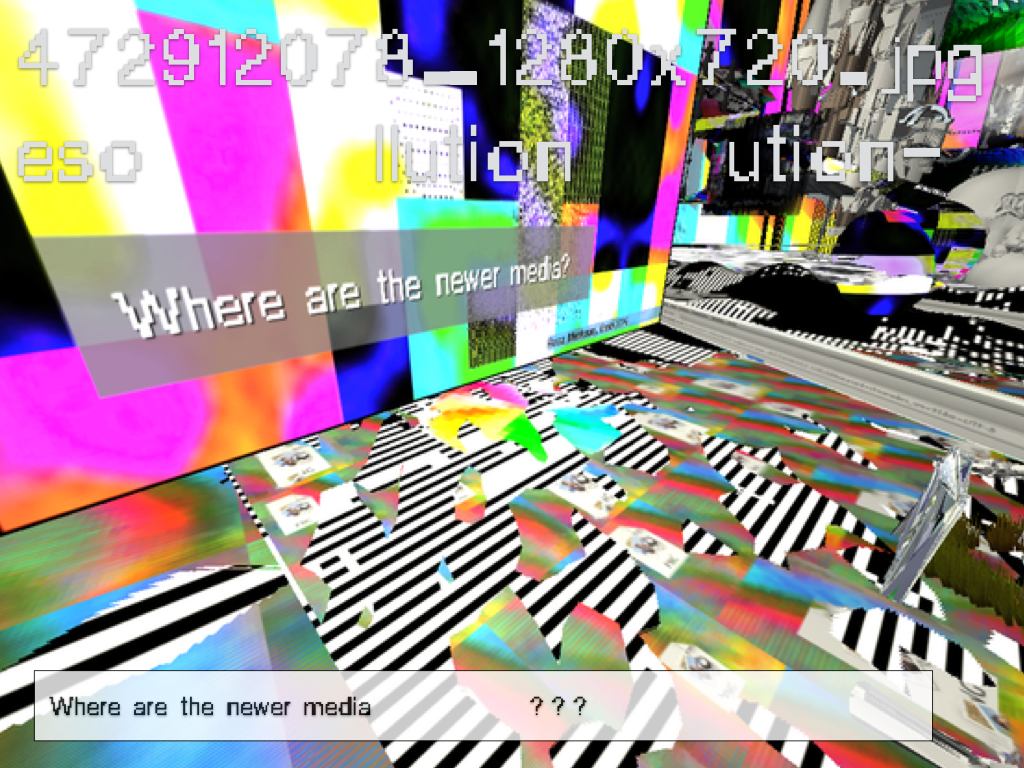
Realities Beyond Resolution
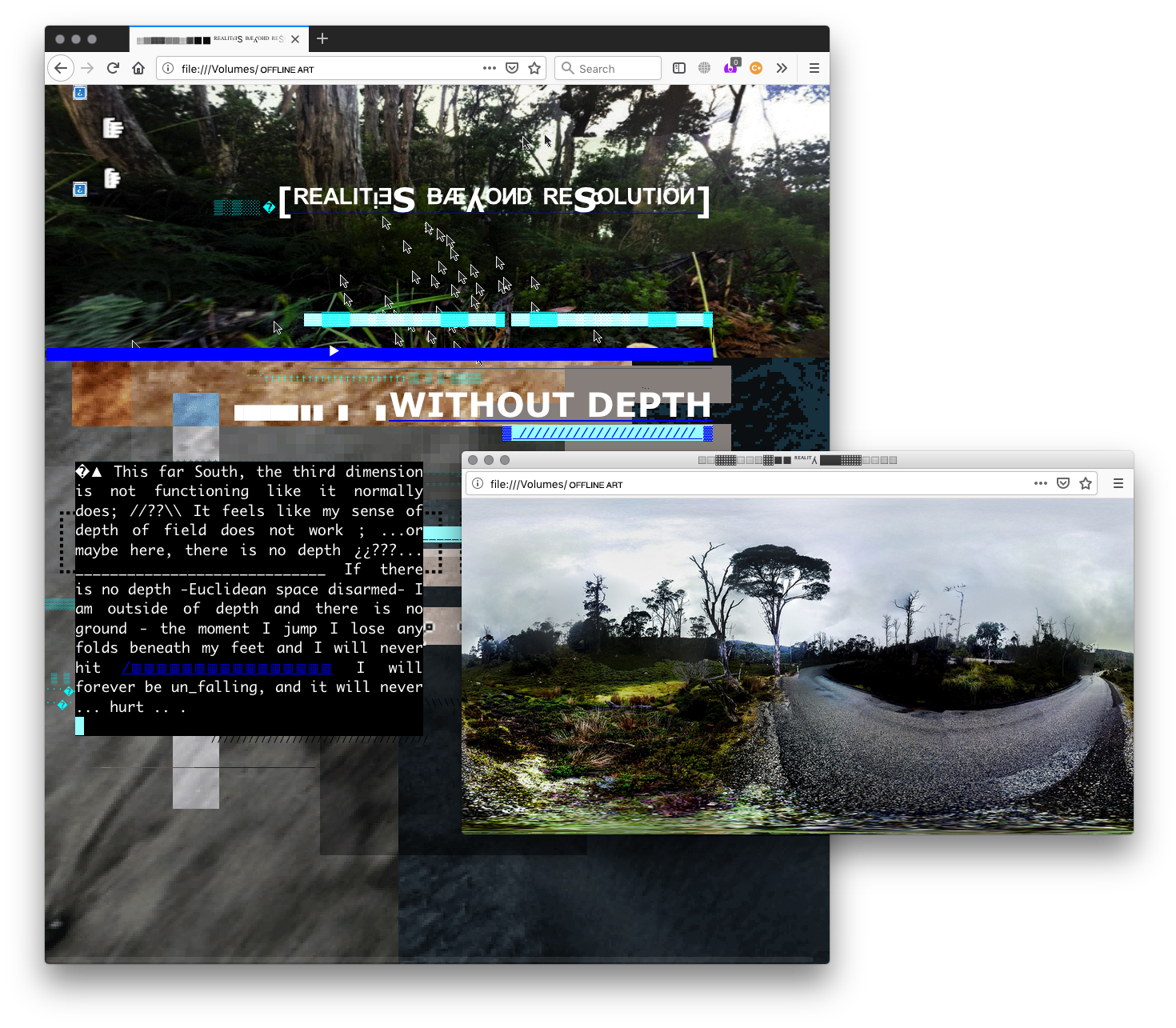 �▲ This far South, the third dimension is not functioning like it normally does; //?? It feels like my sense of depth of field does not work ; ...or maybe here, there is no depth ¿¿???... _____________________________ If there is no depth -Euclidean space disarmed- I am outside of depth and there is no ground - the moment I jump I lose any folds beneath my feet and I will never hit /▦▦▦▦▦▦▦▦▦▦▦▦▦▦▦▦ I will forever be un_falling, and it will never ... hurt .. .
�▲ This far South, the third dimension is not functioning like it normally does; //?? It feels like my sense of depth of field does not work ; ...or maybe here, there is no depth ¿¿???... _____________________________ If there is no depth -Euclidean space disarmed- I am outside of depth and there is no ground - the moment I jump I lose any folds beneath my feet and I will never hit /▦▦▦▦▦▦▦▦▦▦▦▦▦▦▦▦ I will forever be un_falling, and it will never ... hurt .. .
Realities Beyond Resolution as installed in OFFLINE ART: Hardcore by Aram Bartholl (2013)
‘Hardcore’ features a selected group of artists representing a wide range of radical approaches contrasting the mainstream idea of the digital image and web culture. Referring to subcultures in music during the 80s & 90s todays hardcore attitude can be found in various media and genres on the Internet. In the glossy controlled era of Facebook, Apple, and Google hardcore artists challenge conventions with radical points of view and hard core works.
‘Hardcore’ features a selected group of artists representing a wide range of radical approaches contrasting the mainstream idea of the digital image and web culture. Referring to subcultures in music during the 80s & 90s todays hardcore attitude can be found in various media and genres on the Internet. In the glossy controlled era of Facebook, Apple, and Google hardcore artists challenge conventions with radical points of view and hard core works.

How many efforts are required in order to watch?
Whenever I use a ‘normal’, transparent technology, I aim to see 'through' the actual machine. I have learned to unsee its interface and all its structural components. I am able to understand its message and use the technology as fast as possible. In a way I have learned to become blind to (certain parts of) technology.
Similar lines of development have taken place in my perception of sound. As Canadian composer R. Murray Schafer wrote: "We have no ear lids. We are condemned to listen. But this does not mean our ears are always open." Over the years I have learned to close my ear lids and even might have lost (or never developed) some of the sensitivities needed for 'deep listening' (or ‘deep watching’).
The quest to make the public re-hear certain sounds, to educate the listener and to 'open up ear lids', has been a subject pursued by many different sound artists. Acousmatics for instance, a strand of sound art developed by the French composer and pioneer of musique concrète Pierre Schaeffer, lets the audience listen to the sounds originating from behind a "black veil". The source or instrument of the sound remains unseen and unknown while the non-representational or formalist sound forces the audience to focus on active listening.
Has similar research and work been made in the visual arts? Does some form of acousmatic video or even acousmatic videoscapes exist? What would this look like and could glitch play a role in this?
While watching glitch art, the audience perceives glitches without (often) knowing how they came about, which gives them an opportunity to concentrate on their form - to interpret its structures and to learn more from what can actually be seen. In a sense many glitches follow the principle of acousmatics visually.
A videoscape should be a place where artists can create a new, visual ecology that can give playful feedback on the technological conventions that control the spectator in their everyday life. In these conceptually fueled videoscapes we can open our eyes for the unreasonable and give form to what we so often have tried to obfuscate in both audio and visual media, namely artifacts.
The main subject of most glitch art is 'critical perception'. Critical in this sense is twofold; either criticizing the way technology is conventionally perceived, or showing the medium in a critical state. Glitches release a critical potential that forces the viewer to actively reflect on the technology.
The acousmatic videoscape thus uses critical trans-media aesthetics to theorize the human thinking about technology; it creates an opportunity for self reflexivity, self critique and self expression.
The acousmatic videoscape is a space in which I can perceive output outside of my goggles of speed, transparency and usability. The new structures that unfold themselves can be interpreted as a portal to an utopia, a paradise like dimension, but also as a black hole that threatens to destroy the technology as I knew it. Here is a purgatory; an intermediate state between the death of the old technology and a judgement for a possible continuation into a new form of seeing and using, a new perspective… ︎ Videoscapes
⌁
[ analogue ]
[ analogue ]
Beyond Resolution (2015)
Beyond Resolution soundtrack, remix by Ryan Maguire aka moDernisT.
Original: Beyond Resolution [Rosa Menkman, Professional Grin Knalpot remix]
On process, from Ryan Maguires website :
Beyond Resolution soundtrack, remix by Ryan Maguire aka moDernisT.
Original: Beyond Resolution [Rosa Menkman, Professional Grin Knalpot remix]
On process, from Ryan Maguires website :
""moDernisT" was created by salvaging the sounds lost in compression via the MP3 and MP4 codecs.This audio is thus comprised of the audio that would normally be deleted during the mp3 compression of the original file (like an inversed compression).
Beyond Resolution :: Pattern recognition lost its resolution.
15:30 min AV live performance registration that took place during Static Gallery: Syndrome 3.X Loop Systems, Liverpool, January 2015.
Featuring video images by Alexandra Gorczynski and sounds from Professional Grin by Knalpot. Sound mastering by Sandor Caron.
[Resolution Research]
Compress Process (2012)
Compress Process was an online virtual environment (created in Unity) in which one could experience the music video by the same name, Compress Process, beyond its quadrilateral interface.
“A monochromatic cloudy world, where the user controls an abstract body created of some de-structured polygons, robotic extremities and a human head, it goes around the environment contemplating the different kind of distortions which happens while you moves it.”
Compress Process was an online virtual environment (created in Unity) in which one could experience the music video by the same name, Compress Process, beyond its quadrilateral interface.
“A monochromatic cloudy world, where the user controls an abstract body created of some de-structured polygons, robotic extremities and a human head, it goes around the environment contemplating the different kind of distortions which happens while you moves it.”
Compress Process as installed in Aram Bartholl's DVD Dead Drop (2012) at Museum of the Moving Image, NY. An exhibition about videos that are not videos.

